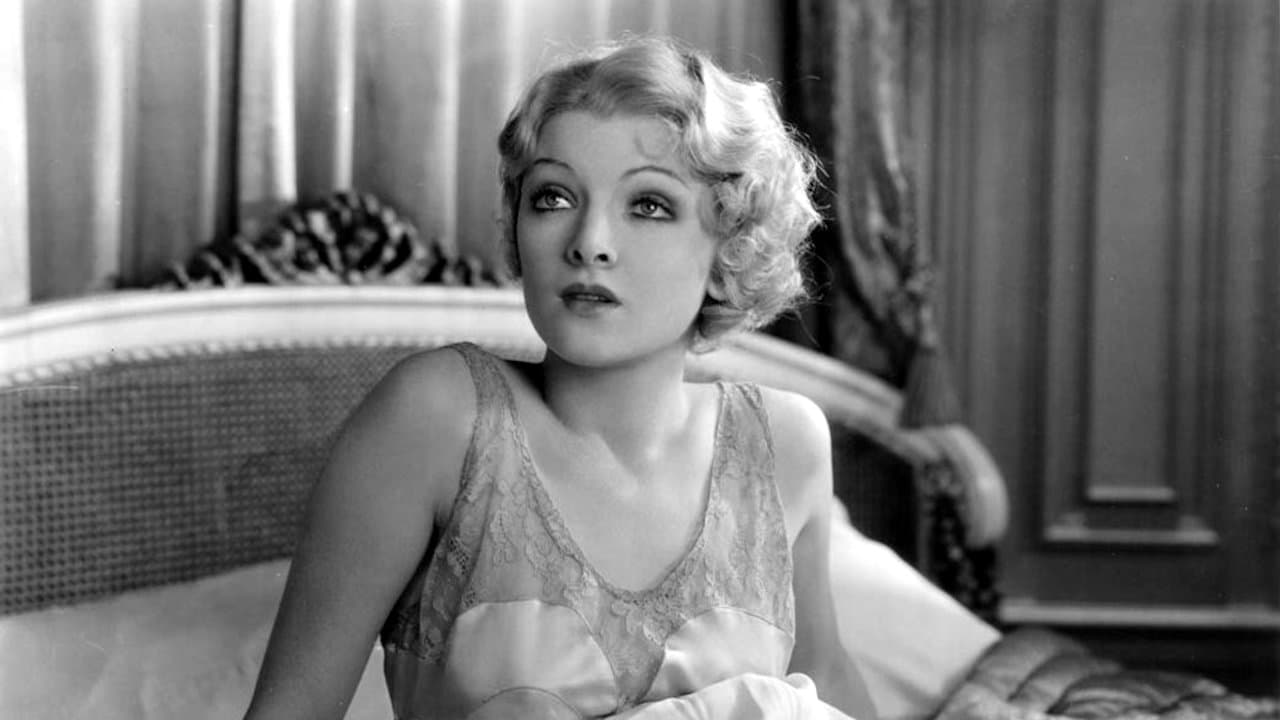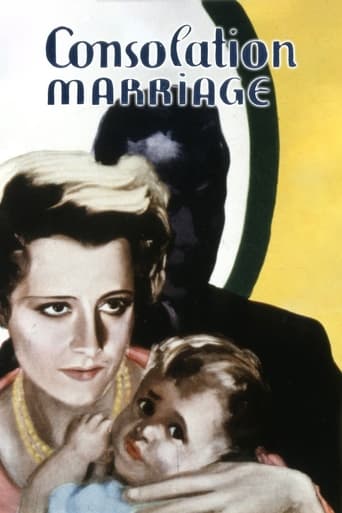

Man, this thing is old. Old in years, yes, but a film can be old and still fresh and relevant. This is old in that it's melodramatic and irrelevant, and dated."Consolation Marriage" is from 1931 and stars Irene Dunne, Pat O'Brien, Myrna Loy, John Halliday, and Lester Vail. Dunne is Mary Brown Porter, who loses her childhood sweetheart, Aubrey (Lester Vail) to a rich woman. Mary tends to be a fairly understanding woman. Or else she's masochistic.She meets Steve Porter (O'Brien), another jiltee, and they decide to get married, even though they aren't in love. There's an understanding that Steve is still in love with the girl of his dreams, Elaine (Myrna Loy), but they keep breaking up. Mary again goes along with this arrangement.When I saw that Myrna Loy was supposed to be playing the other woman, I thought it was a mistake when I saw her. She did not look remotely like herself. Later I realized it was indeed Loy, who made a dazzling blond, beautifully gowned and coiffed.Steve and Mary get a dog and have a baby, but Steve slips away often to be involved with Elaine. Then Mary gets her big chance with Jeff (John Halliday). Will she take it? And will Steve ever leave her for Elaine?It's the rare woman who has the other woman over to her house and helps her dress. This is a movie about class distinction, a big topic in the old days, so it has a certain formality found in the theater and film before the Depression brought in the working man playwrights. I always liked Pat O'Brien, but I've never quite understood why he was used as a leading man in these romantic movies. Comedy, certainly. But unlike the other character actors who became leads - Bogart, Robinson, Cagney, etc. - O'Brien was not as successful. Irene Dunne is lovely in a difficult role, that of a woman being walked all over, putting up with it, and keeping her dignity.John Halliday refers to himself as an "old man," and I thought to myself, "I'll bet he's 40" - you know how differently age was perceived in those days. Turned out he was 50.This is one of Dunne's first films, and if you're a huge fan, you may want to see it. I don't recommend it. At around 90 minutes, it seems like it's four hours long.
... View MoreThis mawkish stilted chick flic from the 30s is concrete proof that they made them as bad back then as they do today (for a lot more money and with a longer shooting schedule). On the face of it Consolation Marriage is about a pair of progressive adults burned by love in the past who enter into an open marriage to protect themselves but find it hard to extricate themselves from it when both ex-beaus come a calling again.Consolation Marriage might have had a chance to resonate with its controversial theme if its bohemian protagonists didn't project such middle class personas. Irene Dunne's Mary makes a sorry attempt at being care free especially when she's deciding to jettison her 18 month old. Pat O'Brien in the meantime comes across cold and unemotional as if listening to confessions. A blond Myrna Loy looks alluring enough but not when she's reduced to fluttering her eyes and mouthing sappy lines like "Oh darling look at this glorious night, it was made for us" to a champion of the Catholic guilt complex. Director John Sloane does little to inspire his actors who morosely deliver their lines in two shot filled with pregnant pauses and embarrassed looks. Sloane manages to zap the energy out of nearly every shot while his clumsy cuts from scene to scene plays havoc with time and place. If there is any consolation to Consolation Marriage it is that Ms. Dunne at times rises above the material and Pat's anemic passion to project an effective and ideal portrait of a modern woman in turmoil. Thing is she does it just as well in better pictures.
... View MoreDunne and O'Brien's joyful relationship was fun to watch. Their patter was witty. They hit all the right notes. The others, well, not so much. This was a movie about modern couples trying to find their way through life and love, self-consciously not old-fashioned, finding out what worked for them and what was only good in theory or for others. There were no conclusions drawn that their choices should be the choices for everyone.Indeed, right and wrong was a complete non-issue. Leave your baby or not--up to you. Change spouses like socks or stick with the one you have--up to you.Then-current psychology was brought into it, that a baby would grow up happier if the mother left to be happy than if the mother stayed and was resentful. And that the mother would miss the baby more than the other way around.While it does have a happy ending, that makes sense considering the fact that the other two in the quadrangle were drips and for some people being in a marriage and having a baby DOES change their point of view in regard to past infatuations. And who would want to lose such an upbeat intimate partnership that included mutual love for a child? It was just a matter of recognizing that they had stumbled into a successful relationship in spite of themselves. I don't know if the two men trying to get them back together toward the end were gay or not but they acted as if they might have been. Gays and lesbians weren't uncommon in movies of that era but a person can read too much into things.I love pre-Code movies. They illustrate that liberalism doesn't go in a straight progression through time. My parents told me stories about people they knew that showed that even the average Joe and Mary on the street could kick over the traces of "the old morality." If we didn't have these movies, and books, of the era we might believe that most people in the past clung to the conventions like limpets when in fact they were transitioning, too. We are still trying to figure out the answers to the questions raised a hundred or so years ago, such as how important is individual happiness and who makes the rules.The last lines were fun, too. Grrr. Go get him, Irene!
... View MoreThe chance to see three Hollywood legends in their salad days is the best reason to see Consolation Marriage which stars Pat O'Brien, Irene Dunne, and Myrna Loy. It's the story of two people who think they've settled for second best in the marriages they make.Irene is jilted by Lester Vail who marries a rich girl and Pat O'Brien is similarly given the heave ho by Myrna. One night Dunne and O'Brien meet in a café and the two fall for each other, but not without a bit of nostalgia for their lost loves. They marry and have a baby girl, but both of them have Vail and Loy come back in their lives.I think you can tell where this one is going. What's kind of strange is that Loy who played the perfect wife for years and years after The Thin Man is the other woman here against Dunne who also played perfect wives and mothers. Dunne and O'Brien never worked together again, but almost 40 years after Consolation Marriage came out, Pat and Myrna were cast as Burt Reynolds's parents in The End, one of the last films for both of them.Consolation Marriage is a pleasant Depression era soap opera with three screen legends and a nice performance also by John Halliday as O'Brien's boss who kind of likes Dunne himself and wishes she were really free.
... View More